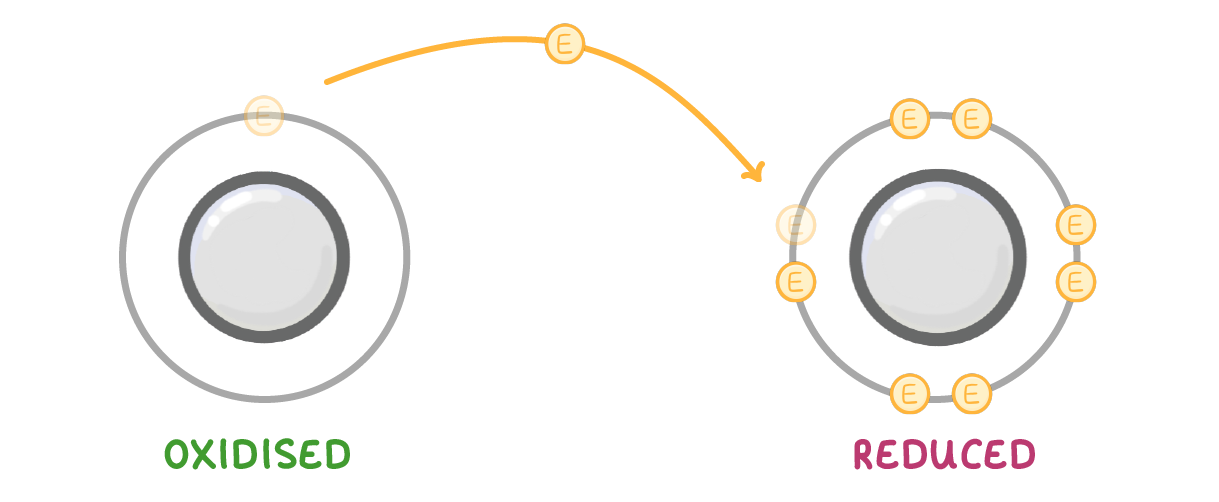Welcome to the Quiz!
This quiz contains 8 questions from a mix of 1 subtopics.

With respect to electrons, reduction is:
The gain of electrons
The loss of electrons
|
Which of these reactions is an example of oxidation?
Ca2+ ➔ Ca + 2e-
Ca2+ + 2e- ➔ Ca
Ca ➔ Ca2+ + 2e-
|

When a metal reacts with an acid, a redox reaction takes place.
The metal ions lose electrons, so we say they've been .
The hydrogen ions from the acid gain electrons, so we say they've been .
|
Sodium reacts with iron sulphate.
Select the two half equations involved in this process.
Na ➔ Na+ + e-
Fe2+ + 2e- ➔ Fe
Na+ + e- ➔ Na
Fe ➔ Fe2+ + 2e-
|
Select the ion being oxidised in the following ionic equation:
2Li + Zn2+ ➔ 2Li+ + Zn
Lithium
Zinc
|

Reduction and oxidation rarely happen on their own.
Usually a reaction involves one species being reduced, and another being oxidised.
(a 'species' just means atom / ion / molecule)
What do we call these reactions?
Addition reaction
Redox
Oxiduction
Thermal decomposition
|
Select the spectator ion present in the following equation:
2K + CuCl2 ➔ 2KCl + Cu
Potassium
Chloride
Copper
Carbon
|
CuSO4 + Mg ➔ MgSO4 + Cu
Which of the following statements is true about the reaction of copper(II) sulfate with magnesium?
Copper ions are oxidised
Magnesium atoms are reduced
Magnesium atoms are oxidised
|